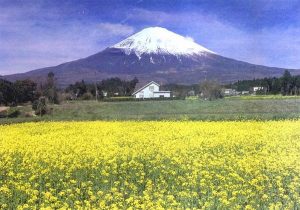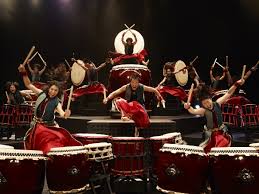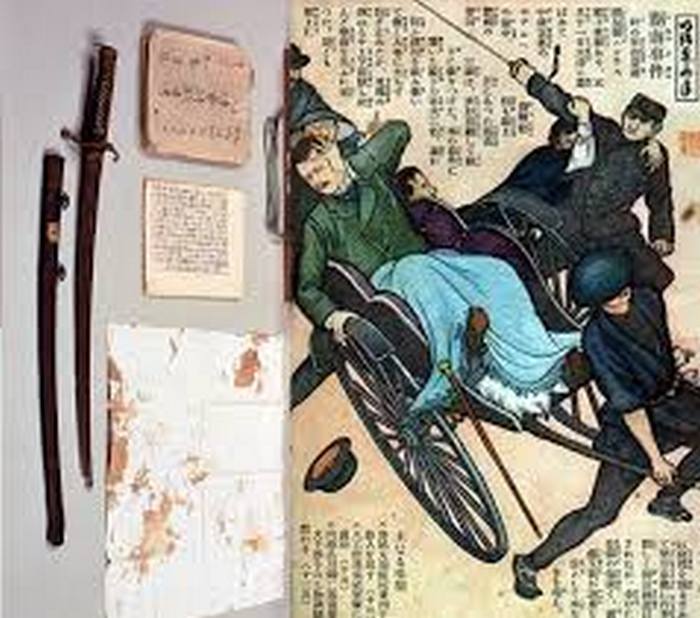Japanese beauty
 Nothing is easier than seeing Mount Fuji. There is a way to examine it in detail – to come over the weekend, to stay in one of the hotels nearby and, from the veranda of your room, to contemplate the beautiful Fuji at sunrise, in daylight, after sunset. But this is far from all: for fans of conquering Everests, there is a special route along which they climb the mountain “wholesale and retail”, sung in every way. The climb takes from five to seven hours, it’s hard to go, but in general they don’t go to the top, but climb, and at night, in order to rise by dawn or simply crawl (whoever succeeds) to the goal.
Nothing is easier than seeing Mount Fuji. There is a way to examine it in detail – to come over the weekend, to stay in one of the hotels nearby and, from the veranda of your room, to contemplate the beautiful Fuji at sunrise, in daylight, after sunset. But this is far from all: for fans of conquering Everests, there is a special route along which they climb the mountain “wholesale and retail”, sung in every way. The climb takes from five to seven hours, it’s hard to go, but in general they don’t go to the top, but climb, and at night, in order to rise by dawn or simply crawl (whoever succeeds) to the goal.
And here comes the solemn moment – you are at the top of the most beautiful and valuable, from the aesthetic, of course, point of view, the mountains of Japan. Then, without fail, you should take a picture of yourself against the background of a landscape fabulously penetrated by the rays of the rising sun (the landscape will be served at 5.30). But if you, a great athlete-climber, got excited and conquered the peak ahead of time, you can relax, drink green tea, have a bite of Japanese sweets. All the same, you will not find anything else: on top of Fuji, everything is strictly Japanese and no amateur performances.
The sun is rising, now take a better position and, against the background of everything you see, take a seat: you can embrace it with the national flag, you can whole group under the same flag. How? Is the film over? Everything was filmed near the tourist bus, at the foot of the mountain – and more than a single shot? Well, it doesn’t matter, in the kiosk at the same peak you can buy high-quality glossy postcards depicting Fuji-san at any time of the year or day, from any angle. Although it was advisable to climb for about seven hours up? After all, this good, both at the foot and in the most remote station stalls in Japan, is sold in any quantities.
A little less than a year ago, I heard from a Japanese friend: “They don’t go up to Fuji, they look at her.” Almost all of my acquaintances, the Japanese, have never seen Fuji close in their life. Perhaps they too literally understood the postulates: do not idolize, do not turn the abstract and the unattainable into a doll of straw, which you can turn in your hands and throw it away, because a meeting with Fuji will kill Fuji. So I’m not in a hurry to see her. I’m probably subconsciously afraid of being disappointed in something. However, she (the mountains) always has a chance to catch me by surprise: to appear to me through the porthole of an airplane rising up through the window through a glass on the top floor of a Tokyo skyscraper. I will not wait for a meeting, but I will always be ready for the enthusiasm presented by random surprises.
Aesthetics of the seasons
Summer in Japan can please only Finns and other northerners who are so hungry for the sun that they are ready to be burned to the bone, as well as absorb the 100 percent humidity that is applied to the load. As for me, the entire supply of sunshine of the seaside resorts, accumulated over sixteen years of life in Ukraine with its pronounced seasons, I squandered on my very first Israeli summer, for some reason lasting six months.
So, a few days ago, the Tokyo weather pleased – it started to rain, and not just rain, but rainfall, air temperature dropped. You walk along the street and you no longer feel part of some shapeless mass, consisting of people, cars, dogs sticking together with hot air. The breeze touches the skin, in the air there is a smell that happens only after rain. I am walking through the Ginja. Showcases with samples of clothes, already autumn, are reflected in the wet sidewalk and … What do I hear? Zoc, zok, zok – heels of ladies sandals touch the sidewalk. This struck me: for more than two months now I had not paid attention to such things! All efforts went into the fight against heat, there was not a drop left for the perception of pleasant trifles, attention was focused only on road signs, transitions, and the purposes of sorties outside the air-cooled spaces.
Then I recalled a conversation in the heat of peak with my Japanese friend: “Natsuko, let’s go to the show in Kabuki?” “Let’s go, not just now, but in the beginning of autumn, now it’s such a heat, there’s absolutely no atmosphere of culture.”
Due to the lack of this very atmosphere, Ikebana exhibitions are not held in the summer, and there are no tea ceremonies. What kind of perception of beauty can there be when you can’t feel anything more than the simple requirements of the body?
Everything is simple. The Japanese are not close to the rhythm of nature in words – they live in its rhythm and focus on beauty as it manifests in nature, as the human body is able to perceive beauty in full.




